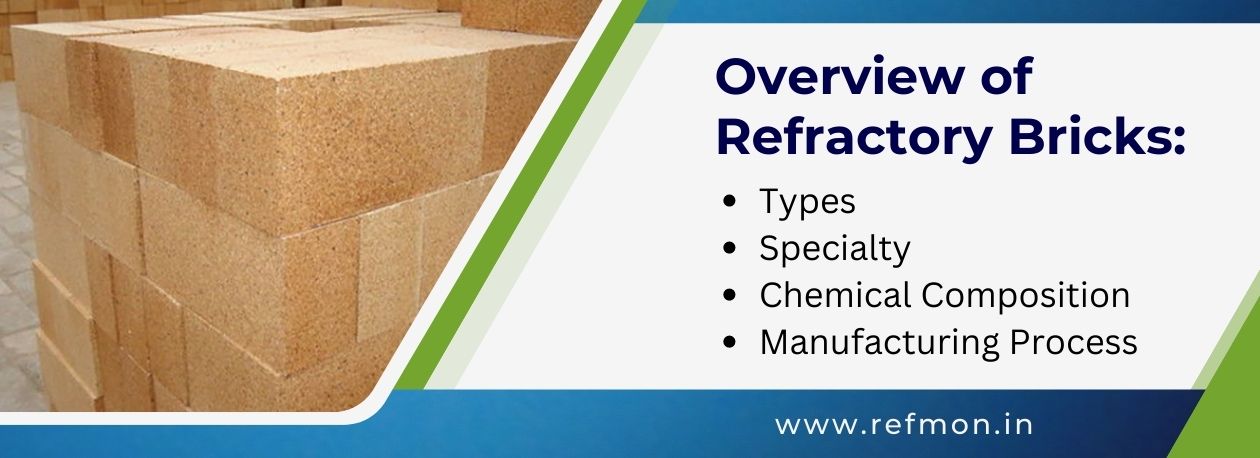Well, you ask me what them refractory bricks are made of? Ah, that’s somethin’ folks don’t always understand, but I’ll try to put it plain for ya. Them bricks ain’t like the regular bricks we use to build houses, no sir. Refractory bricks, or as some call ’em fire bricks, are real tough cookies, designed to withstand all kinds of heat, the kind that would melt most other materials down to a puddle.
Now, these bricks are made of a few special materials that can stand them high temperatures without falling apart. The main ones you’ll hear about are alumina and silica. These two are the backbone of refractory bricks, just like how rice is to a good bowl of porridge.


- Silica: This here is just regular sand, mostly, though sometimes they use quartzite. Silica can handle a lot of heat, that’s why it’s one of the main ingredients.
- Alumina: Now, alumina comes from a mineral called bauxite, and it’s like the stronger cousin of silica. It’s what helps these bricks stand up to even hotter temperatures. The more alumina you put in, the hotter them bricks can stand up to. Some bricks got as much as 80% alumina in ’em!
- Magnesia: This one’s from minerals like magnesite, and it helps with heat resistance too. If you got a high-temperature furnace or kiln, magnesia comes in real handy.
- Chrome: A bit rarer, but it gets used sometimes, especially when you need bricks to hold up under both heat and chemical attacks.
What makes these bricks special is their ability to handle extreme temperatures, sometimes as hot as 2100 degrees Celsius! Now, that’s hotter than a summer day on the stove! These here materials are mixed together in the right amounts to create a firebrick that can stand up to the heat from kilns, furnaces, and other high-temp jobs. You don’t want to use regular bricks for that, no sir, they’d melt right quick.
Folks might think it’s all just fancy science behind these bricks, but it’s really just about mixin’ the right natural minerals. Refractory clay, a type of clay that’s real rich in alumina and silica, is one of the main things used. Then, there’s a bunch of other minerals too, like high alumina materials, silica sand, chrome ore, magnesite, and even stuff like forsterite and olivine, which sounds like something out of a science book, don’t it? But it’s just fancy rocks, really.
See, most of these raw materials come from nature, dug up from the ground. It’s not somethin’ you can make in your kitchen, that’s for sure! It takes a lot of know-how to get the right mix so the bricks can handle the heat. That’s why when you look at these refractory bricks, you’re lookin’ at a result of a lot of years of work by folks who know their stuff.
Now, let me tell ya, these firebricks ain’t just for the fancy furnaces and kilns. You’ll see ’em in all kinds of places where there’s high heat involved. They’re used in steel-making, in the glass industry, even in the power plants that generate electricity. If you need something to withstand the heat and not crumble, well, fire bricks are the ones you turn to.
And don’t think them bricks just get made anywhere. Nope, it takes special factories where they mix them minerals just right. They bake ’em up at high temperatures too, so the bricks can become as hard as a rock and ready to take on the heat. Once they’re ready, they’re used for all kinds of jobs, and you can bet they’re reliable, just like a good ol’ plow horse.
So, next time you see a kiln or a furnace puffin’ away, just remember what those bricks are made of—alumina, silica, magnesia, and all them other minerals that help ‘em stand up to the heat. They might not be pretty, but they sure get the job done, just like a trusty old shovel or a sturdy pair of boots.


Tags:[Refractory Bricks, Fire Bricks, Alumina, Silica, Heat Resistance, Construction Materials, Furnace Bricks, High-Temperature Bricks, Kiln Bricks]


